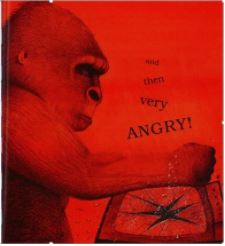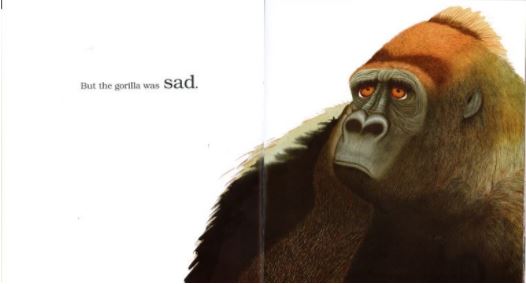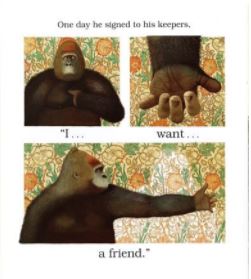Links to the Victorian Curriculum – English
Discuss the characters and settings of different texts and explore how language is used to present these features in different ways (Content description VCELT219)
Identify visual representations of characters' actions, reactions, speech and thought processes in narratives, and consider how these images add to or contradict or multiply the meaning of accompanying words (Content description VCELA215)
Recreate texts imaginatively using drawing, writing, performance and digital forms of communication (Content description VCELT192)
Create short imaginative and informative texts that show emerging use of appropriate text structure, sentence-level grammar, word choice, spelling, punctuation and appropriate multimodal elements (Content description VCELY194)
Listen to and respond orally to texts and to the communication of others in informal and structured classroom situations using interaction skills, including listening, while others speak (Content description VCELY174)
Links to the Victorian Curriculum – English as an Additional Language (EAL)
Pathway A
Speaking and listening
Level A1:
- Negotiate simple social or learning activities
(VCEALC003)
Level A2:
- Negotiate familiar social and learning situations using language appropriate to the situation
(VCEALC085)
Reading and viewing
Level A1
- Identify familiar words and simple sentences and match them to images
(VCEALC032)
- Recall or repeat familiar or favourite parts of a text using memory or home language resources
(VCEALA041)
- Understand aspects of simple, familiar texts
(VCEALC031)
Level A2:
- Use knowledge of context, text structure and language to understand literal and inferred meanings
(VCEALC114)
- Write a small range of everyday texts and personal texts
(VCEALC138)
- Negotiate familiar social and learning situations using language appropriate to the situation
(VCEALC085)
Writing
Level A1:
Level A2:
Theory/practice connections
A number of semiotic resources can be used to construct visual texts. These include, the use of colour, the framing of the images, shot distance, and the way a character's gaze is designed to engage the reader (Callow, 2012).
Additional resources
A number of Anthony Browne's picture story books.
Learning intentions
Today we are learning to identify visual elements, which help us make meaning.
Success criteria
I can name and describe different visual elements used in picture story books.
Role of the reader
Text decoder: What are the codes I can read in this visual text?
Text analyst: Why has the author/illustrator used this codes and what effect do the use of these codes have on me?
Group size
Small focus group.
Lesson sequence
- Articulate the learning intention. Today we are learning to identify visual elements that help us make meaning.
- Locate all the sentences where the font size is bigger than the rest of the text. Some of these sentences also include ellipses. Students discuss what effect the varying font size has on the reader? Students may associate font size with reading the text louder. In Little Beauty the larger font size emphasises the emotion felt by the gorilla or Beauty.
 “I…want…a…friend,”
“I…want…a…friend,”
They did everything together.
And then very angry?
“It…was…ME! I broke the television!”
Everyone laughed.
Compare and contrast the illustrations on these pages.
Why has the author/illustrator chosen red to colour the page when the gorilla becomes angry. Look at the zig-zag positioning of the font.
Find the other example of where the colour red has been used. It is for a rose depicted in the title page and at the end of the book. Students discuss the significance of the rose. - Students consider what colours the author/illustrator could have used on the other highlighted pages. How could sadness, friendliness, happiness etc. be represented through colour and font? Students use Paint or a similar program on a digital device to re-create one of the pages, including colour and font changes.

- Explore with children other devices that draw the reader's attention to a significant aspect of the text.

Framing: Three frames are used in the illustrations that depict the gorilla signing. This sequence of images allow a process to be shown. Discuss the shot distance in these frames. What effect does the close up have on the reader? Students create a series of three illustrations for a familiar process (e.g. brushing teeth, opening a cereal box, tying shoelaces). What will feature in the close up shot?
Gaze: Offer/demand. Identify the pages where the characters look directly at the reader. Students discuss why the author/illustrator selected these pages. Students use the illustrations in a range of Anthony Browne’s texts to use as models for their own drawings of eyes with the offer or demand gaze.
Assessment: Anecdotal and ongoing. The teacher looks for evidence of students naming and explaining the visual elements, used in the context of the texts.
Differentiation
This lesson requires much use of the metalanguage of visual literacy. Some students will need more support negotiating the new terms. Visual cues placed around the room, to which students can refer would be beneficial.
Links across the curriculum
Visual Arts Respond to visual artworks by describing subject matter and ideas (Content description VCAVAR024)